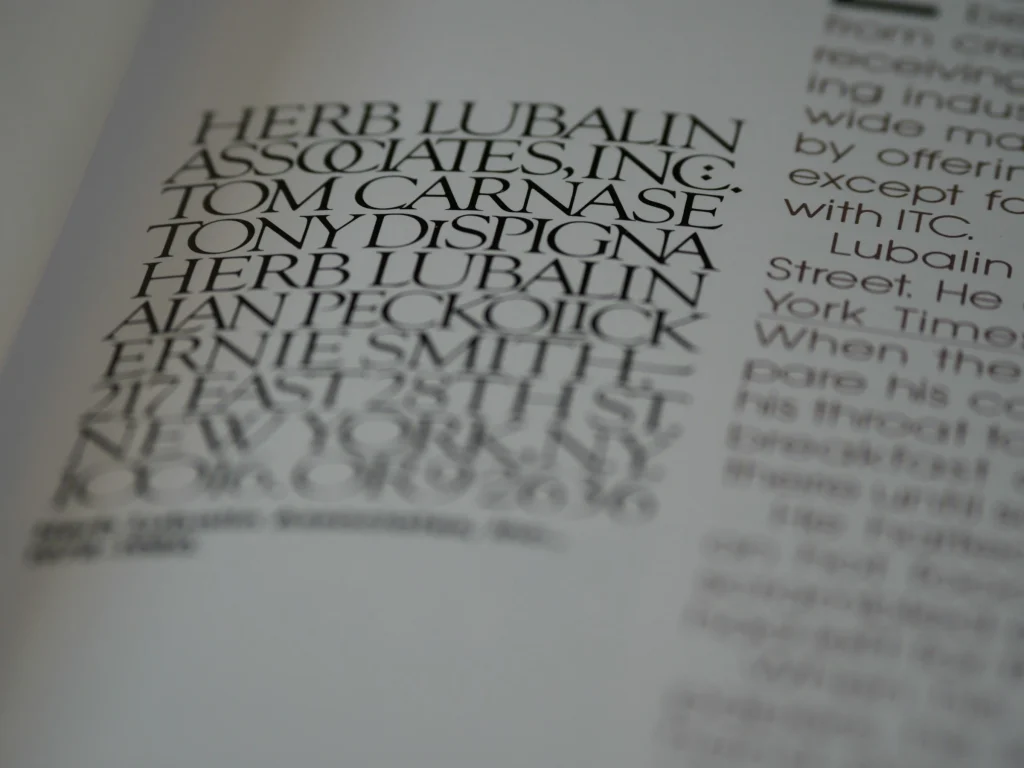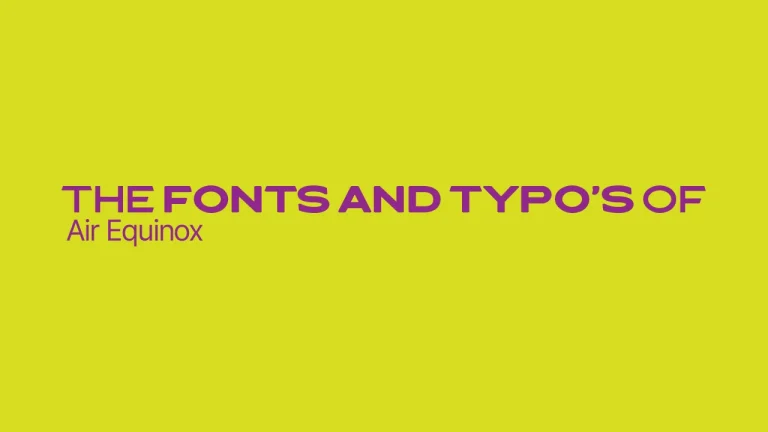There is something that those working in brand communication know well; today, it is not enough to just look visually aesthetic, the one who shows the ability to empathize with the target audience wins. There are many things that make the consumer feel good about the brand, from the brand’s logo to the visuals used on social media, from the design of the packaging, if any, to the traditional or digital advertisements.
It looks complicated and a bit boring, doesn’t it?
Details are very important and have a greater effect on establishing a connection. Typography, which has an important place among these details, is in a critical position in the brand’s design and communication with its target audience.
For some, typography is choosing Google Fonts or a few sites that offer fonts for free and choosing one of the different parameters that appear on the screen, while for those who think of design in a more serious way and with the impact it creates, it is a whole that needs to be recreated and considered in all its aspects.
Therefore, when I talk about typography in brand and marketing communication, I am also talking about a very important actor.
The new generation, to whom I tend to take the easy way out by throwing a lot of things on, also has some problems with typography, consciously or unconsciously.
Fonts classified as serif are almost never on the radar of young people. So why do you think this is the case?

What is “serif”?
Before moving on, I need to continue by providing a little technical information for those who do not have any knowledge about typography.
What I am referring to as serif is the small nail-like protrusions found in the corners of typefaces that we use in all media, whether printed or digital. The most striking examples I can give in this category are fonts such as Georgia, Times New Roman, Source Serif, Vollkorn, which are very popular.
Serif fonts are perceived as classic, serious and confident at first glance, and this is the main reason why they are frequently used in newspapers, books and academic publications within their own safe boundaries. However, since life is not just about newspapers, books and theses, serif fonts seem to contradict the fast, simplified and dynamic structure of both real and digital life.

Understanding and keeping up with the expectations of the new generation
The majority of children born in the late 90s were born directly into digital screens and grew up spending most of their time in front of these screens. Therefore, fast, simplified, plain, fluid and highly accessible are no different than a basic expectation for them. In other words, these have never been a preference or choice for them.
As someone who makes money from this job, I can even say that serif fonts make the text look more formal and as if it were related to a corporate structure. Among the expectations of today’s youth and young adults, a simple and clean presentation, easy reading on small screens and low resolutions, and ultimately a little more sincerity and closeness are at the top of the list.
Popular social media platforms, platforms frequently used by young and young adults, and even giant technology companies now include sans-serif, or sans-serif fonts, in their typographic designs, and update their corporate identities in this way.
Some brands these days, in an effort to adapt to temporary trends and simplify, leave the elements that make up the deep-rooted character of the brand out of their corporate identities and engage in experimental activities that usually end badly.
When we look at it from the brand and product owner’s perspective, it is in the pocket to provide a design style that is suitable for the new audience and meets their expectations; on the other hand, the issue is not just simply the change in demand and new trends.
Serif fonts show lower performance, especially in terms of display on mobile devices. In addition, it is clear that these types of fonts represent a certain cultural heritage. Sans-serif fonts can be considered as a universal and simple means of communication, independent of a certain culture.
For the younger generation, simplicity is not only about aesthetic appearance, but also about posture. The simplest but most obvious definition of this is simple is more.

How does the difference in perception between generations transform new approaches in typography?
Creativity and producing creative work are the most important areas of work for today’s youth and young adults. Especially those working in advertising and marketing communications, which are defined as new generation jobs, define sans-serif fonts as a freer form of expression.
Serif fonts are perceived as being related to areas where young people may prefer to stay more distant, such as academia, bureaucracy, the judiciary, and traditional media, and therefore these fonts create a more old-fashioned context in people.
Brands are looking for ways to become more human in every area they communicate. Therefore, while brands are trying to communicate with their target audiences and capture their interaction, they care about positioning themselves as a close friend of the person, rather than as an institution trying to sell products.
Serif fonts are unlikely to appear serious, distant and more corporate while also looking sincere. Thus brands are switching to Sans Serif typography, which is closer, more intimate, friendly and understandable in daily life, more quickly and willingly.
I don’t think it matters what names you use to define generations, but I think it wouldn’t be wrong to say that while Generation Y, which is defined as people born between the late 1980s and 1990s, was the main target audience of marketers, Serif fonts still maintain their power and can find a place for themselves in every field of design.
Serif fonts were a primary choice and a strong stance, especially for brands that displayed prestige, an identity built from an academic perspective, and an intellectual stance within their own sector.
The most important reason for this change is that the group I define as Generation Y is getting older and the understanding and expectations of those who replace them are different. Because this new generation, called Z, had easier and faster access to information and, due to the conditions of the time they were born into, new, dynamic and different ways of building prestige emerged.
Although serif fonts may seem out of fashion and a thing of the past, today’s modern typographers are working on making classic serif font forms appealing today by making contemporary touches to them, and are even producing new serif fonts and opening up areas for use.
The most important example of this is the content platform Medium; I think a concept that is mostly made up of serif fonts has gained attention and risen with Medium.
Serif fonts continue to add personality to the work when combined with a sans-serif font and used in a place like a title, for example.
For further reading…






